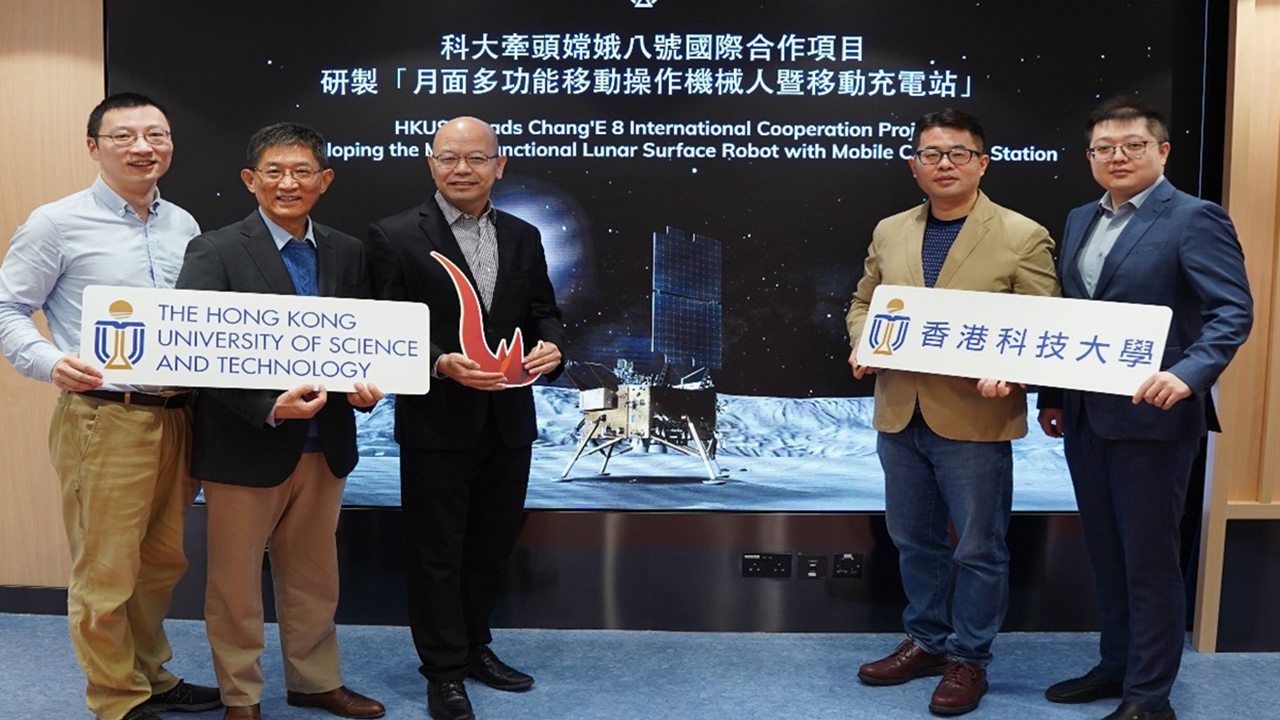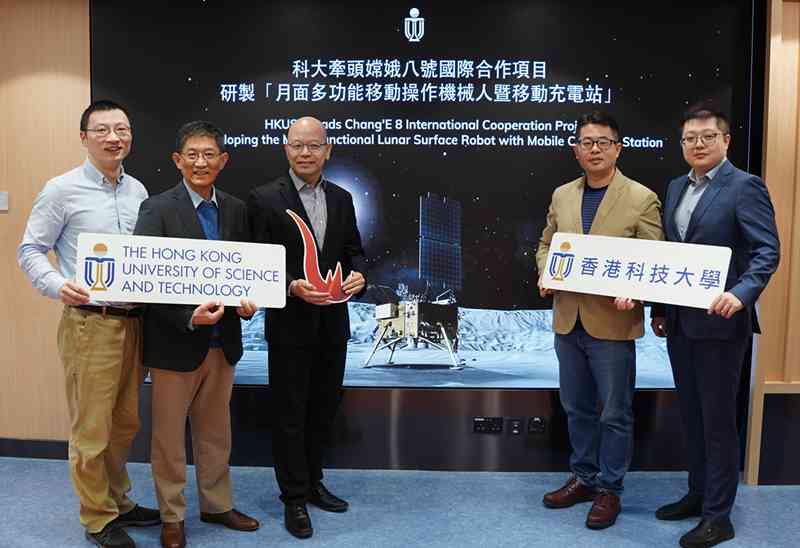
00:00 - 00:00
2024-12-19
Source: https://www.eyeshenzhen.com/content/2024-12/19/content_31399618.htm
The Hong Kong University of Science and Technology (HKUST) will lead a team to develop a multi-functional lunar surface robot to be deployed in the Chang’e-8 lunar mission. It will be equipped for dexterous operations and feature a mobile charging station.

The Hong Kong University of Science and Technology (HKUST) announce its appointment by the China National Space Administration (CNSA) to spearhead an international collaboration project for the Chang'E 8 mission Dec. 17. Courtesy of HKUST
Expected to weigh about
100 kilograms, the robot developed by the Hong Kong team will perform
scientific exploration, deploy instruments, and carry out installation
tasks in the moon’s challenging environment.
Its mobile wireless charging capability will provide power to multiple devices on the lunar surface, enhancing the efficiency of lunar exploration and collaborative operations, the HKUST reported on its official website Tuesday.
The project aims to advance technology for deep space exploration and support future scientific research at the planned International Lunar Research Station (ILRS), the university said.
The project will be primarily led by professors Yu Hongyu, Sun Qingping, Shi Ling, and Duan Molong.
Universities from Hong Kong and other mainland cities, and the South African National Space Agency (SANSA) will participate. The Hong Kong Space Robotics and Energy Center, funded by the Innovation and Technology Commission (ITC) of the Hong Kong government under the InnoHK initiative, will be established to drive the mission.
Yu from the university’s Department of Mechanical and Aerospace Engineering (MAE) outlined the challenges of the mission. “To ensure the robot’s reliable performance in extremely low temperatures, we need to use proper materials to build it, incorporating a temperature management system. A smart design is required to ensure its precise positioning, navigation and remote control. The robot must also be lightweight while serving as a charger for other lunar equipment,” he explained.
China’s lunar exploration program will carry out two more launch missions to lay the groundwork for the ILRS, with the first launch expected to take place as early as 2026, according to the CNSA.
According to the plan, China will launch the Chang’e-7 mission in 2026 and the Chang’e-8 mission around 2028. As one of the pioneering initiatives led by China to set up an international lunar research station, the Chang’e-8 project will pave the way for the establishment of a long-term unmanned facility in the lunar polar regions, the HKUST said.

